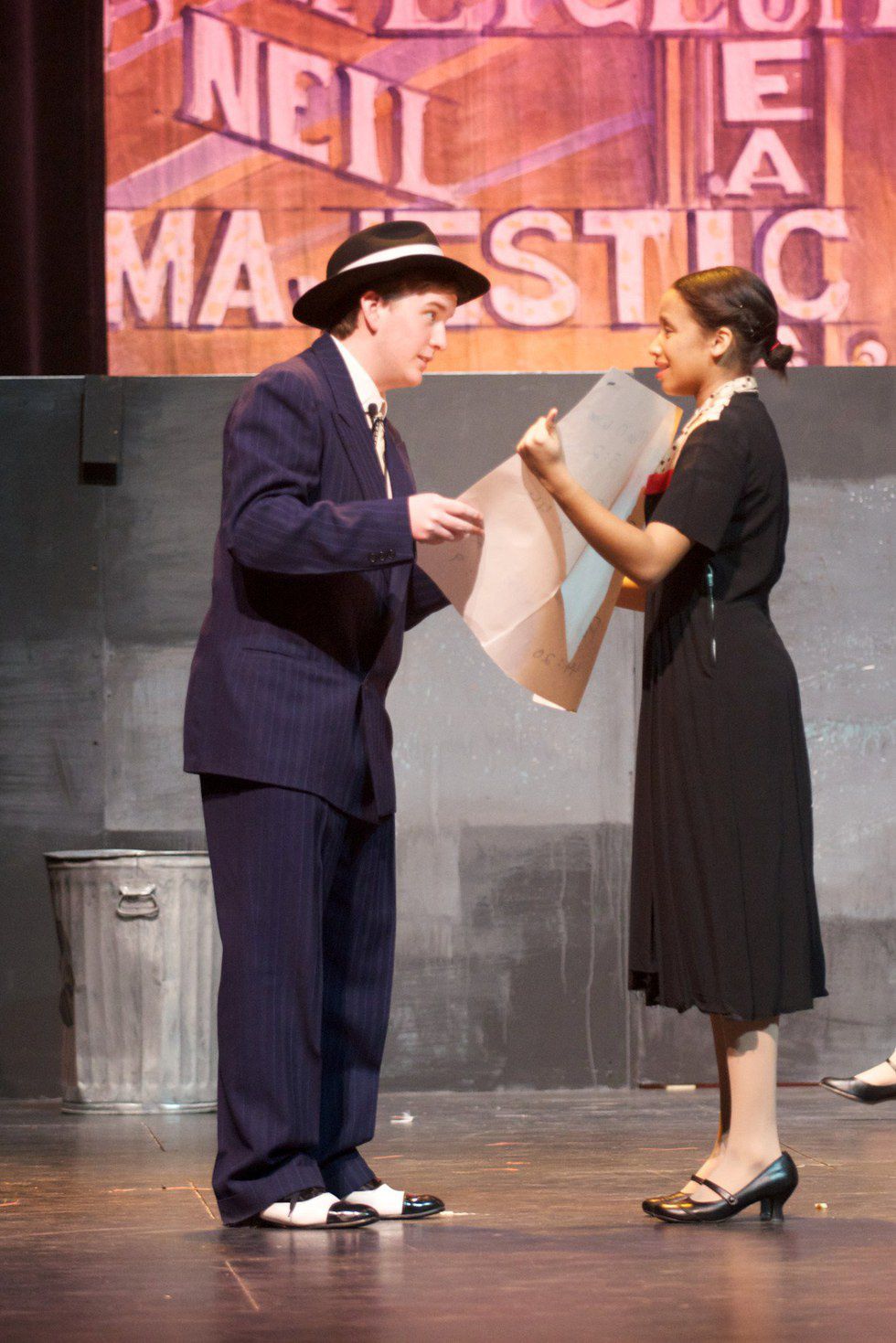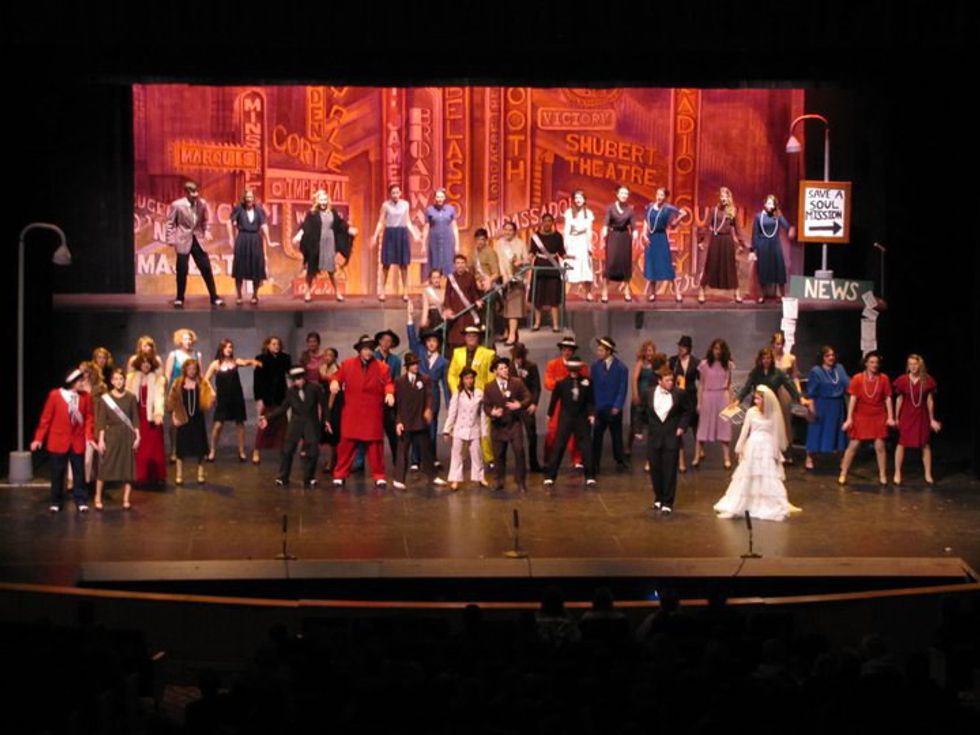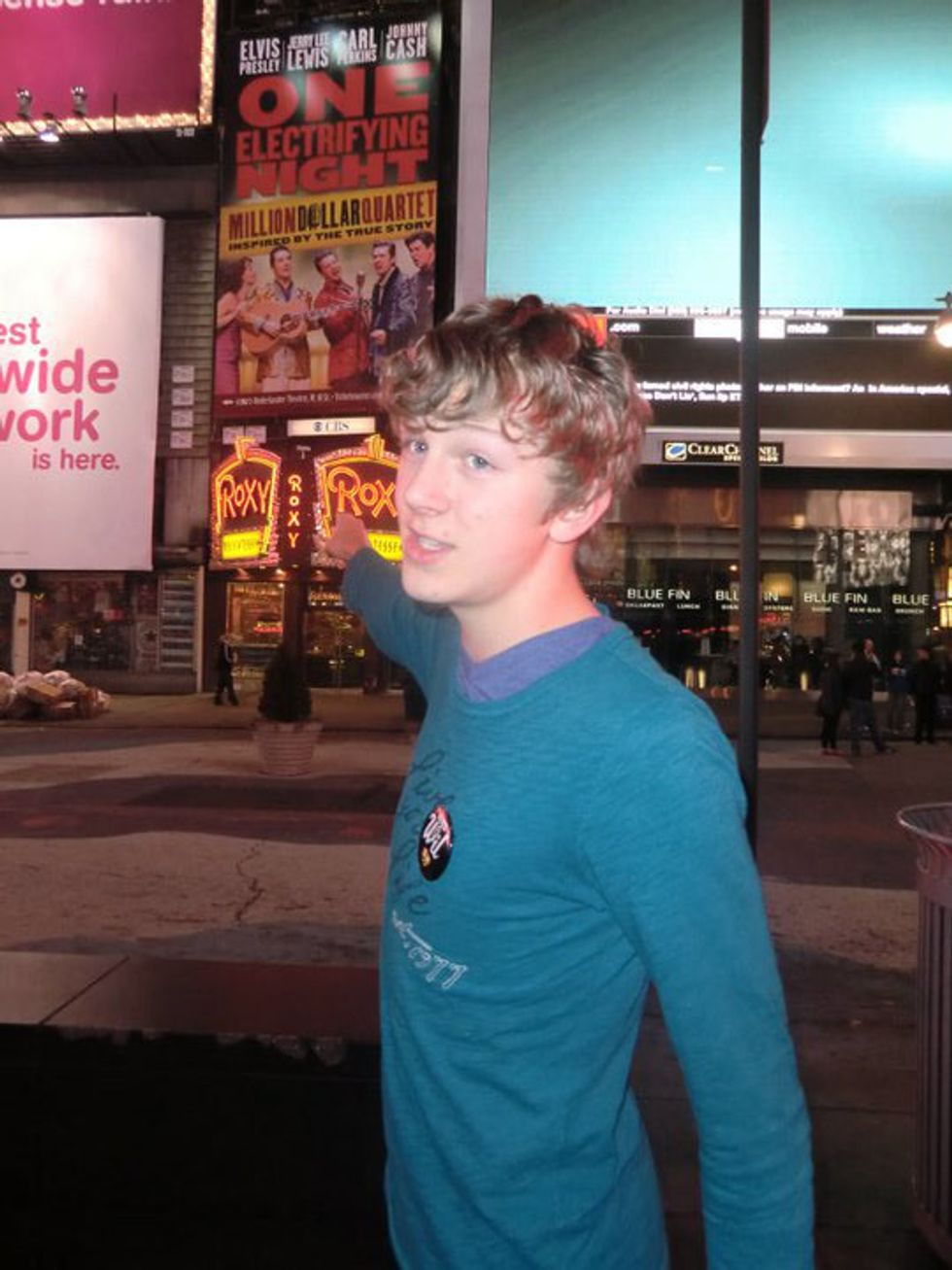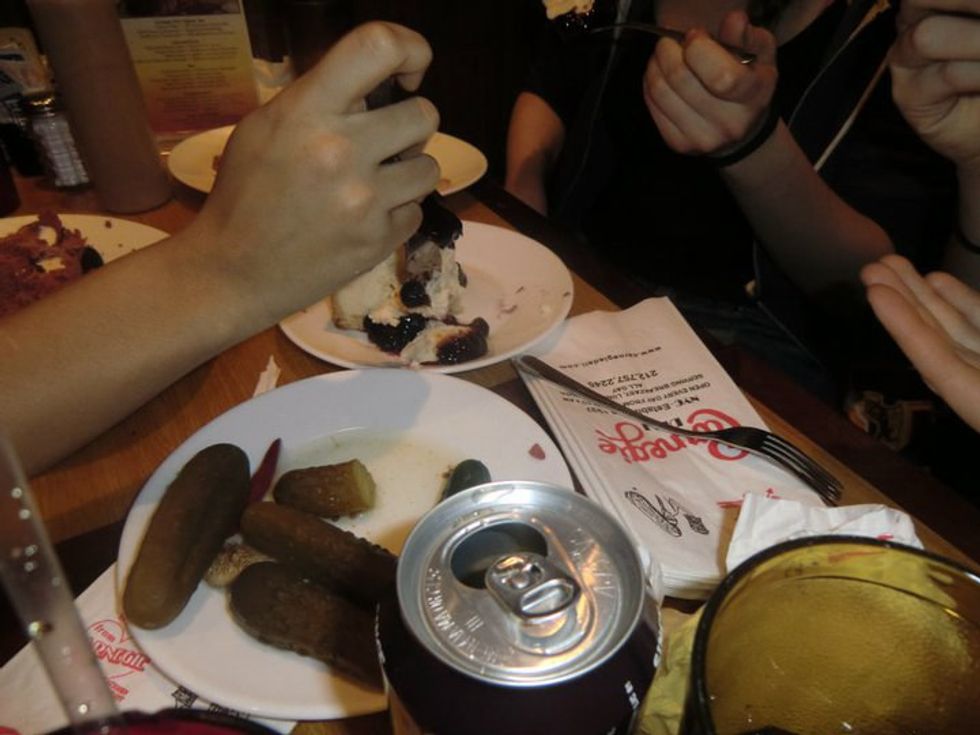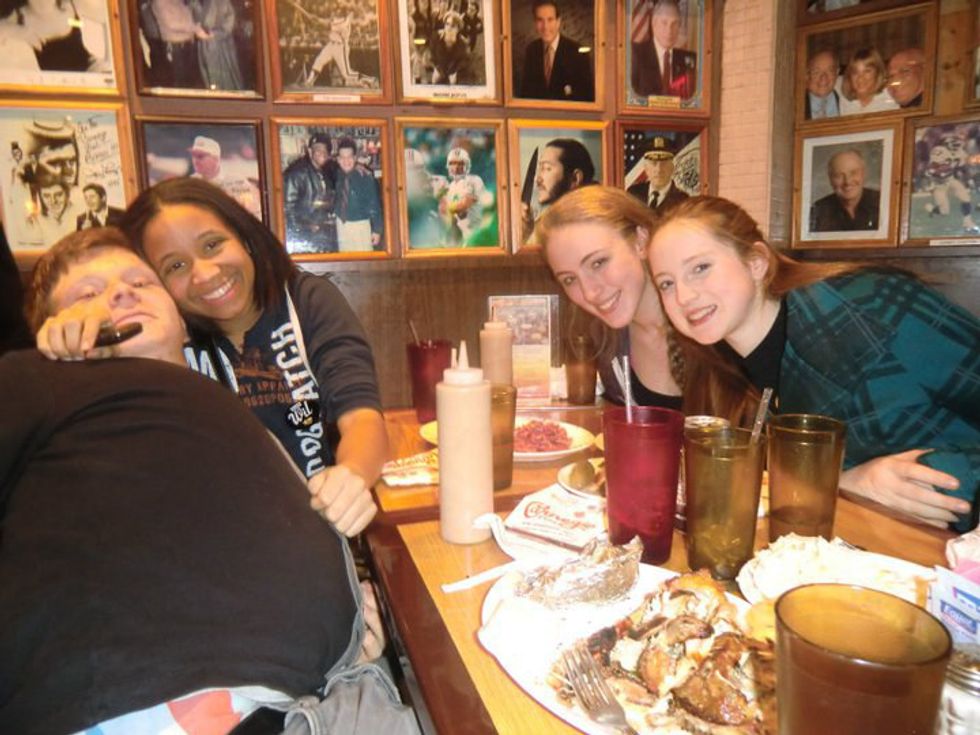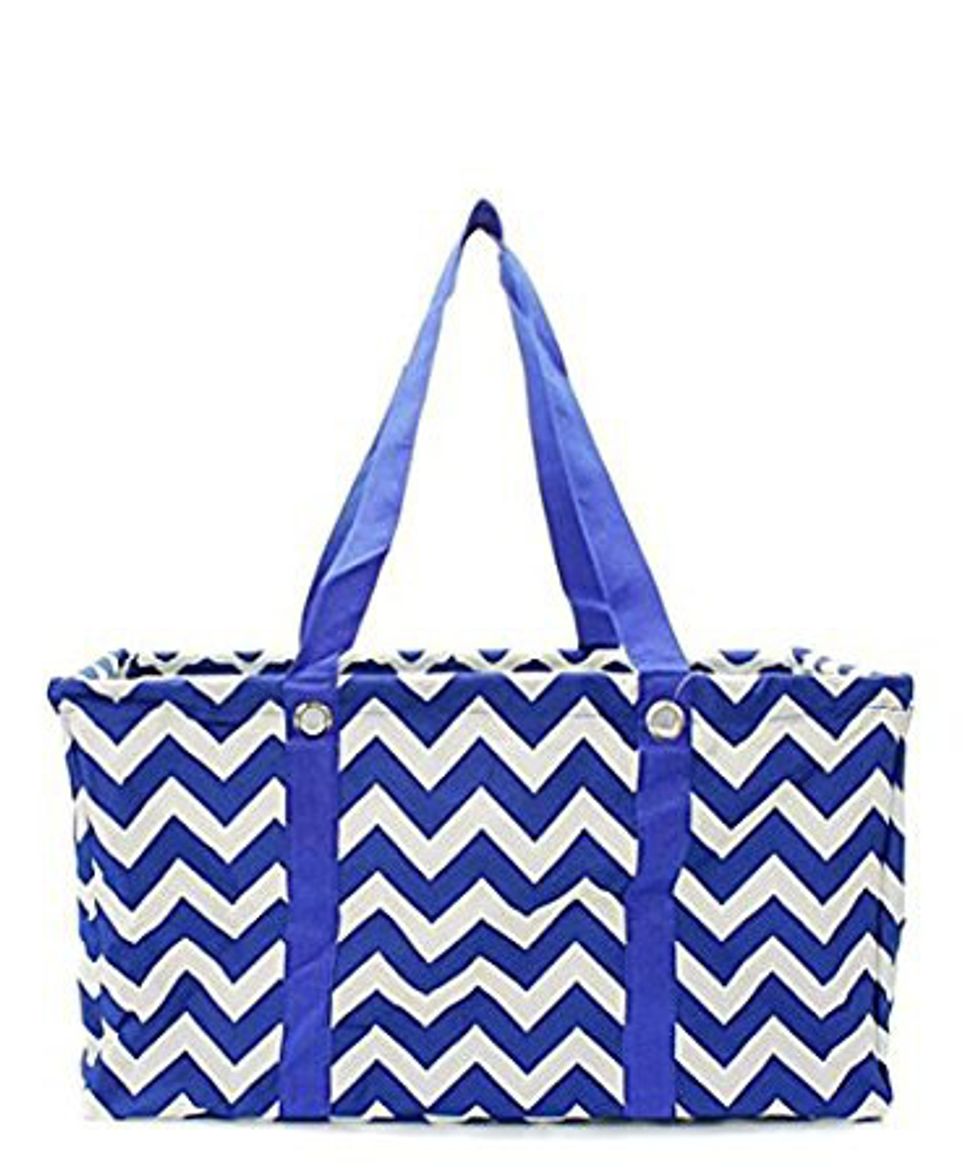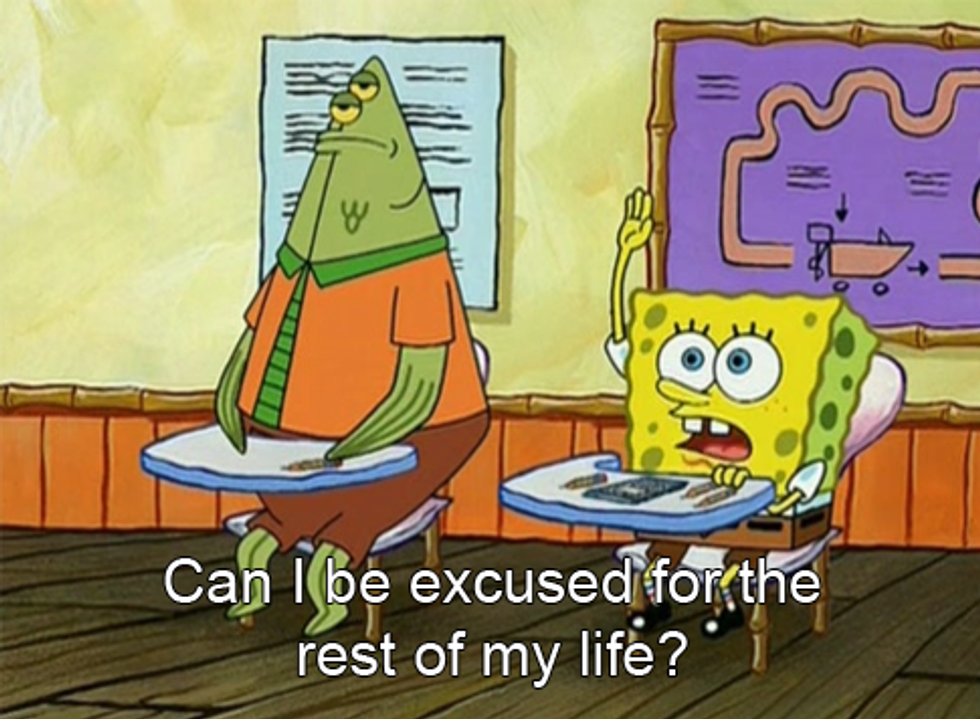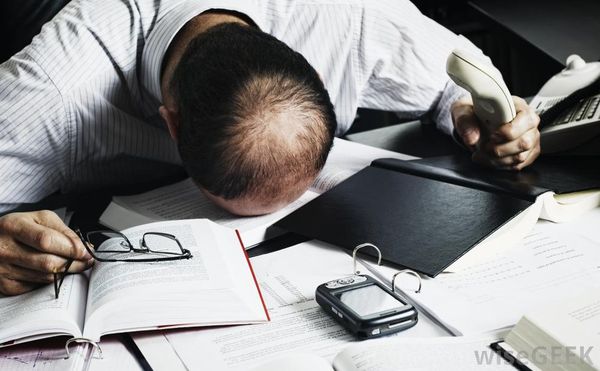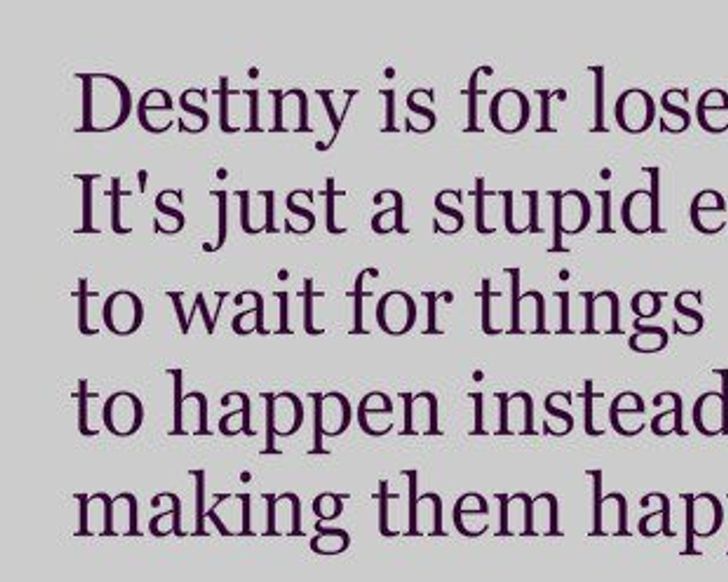Everybody has an idealized version of New York in their heads. For me, it’s the 1950s New York, before Time Square fell to crime in the 1970s and Disney in the 1990s. Or 1940s New York, but by New York I mean Manhattan, and by Manhattan, I mean Harlem. I tried to write a movie set there, but it was a sequel to my ill-fated Swing dancing film, so I gave up on that.
My 1950s Time Square looks a lot like "On the Town" or "Guys and Dolls." I really am a huge fan of that latter show in particular. Although I always wished I could have a writing partnership like Betty Comden and Adolph Green; their friendship is true relationship goals. But the reason I love "Guys and Dolls" is because I was in that show in high school as female chorus/ "Time Square Drunk."
The other show, On the Town, opens with the number “New York, New York,” as three sailors—Ozzie, Chip, and Gabey— pas a deux through this “helluva town.” Chip brings with him an outdated guidebook, hoping to see all of the famous places his dad told him about. With twenty-four hours of shore leave, he sets off to find his father’s Manhattan—the Hippodrome, the old Aquarium, the world’s tallest building the Woolworth, to the Forrester theater to see the long running show "Tobacco Road." What he finds instead is an out-of-work cab driver, Hildy, who takes him to her apartment and tells him that his Manhattan doesn’t exist anymore.
My Manhattan is as unreal as Chip’s, made of cloth drops, gobos, spike tape, plywood, Christmas lights and paper towel rolls made to look like monk-and-nun roof tiles. Time Square is filled with hustlers, gamblers, naïve tourists from Texas, zoot suiters, and showgirls. Manhattan is pulsating with greens, blues, and purples. A cop on his beat catches some hustlers’ racket and chases them down Broadway, stage right. Exeunt pursued by a cop. Within a few minutes, three gamblers check the race papers. Epitaph, Valentine, Paul Revere are all favored to win according to different sources. Thankfully the Save-a-Soul missionary band stalks the street trying to spread the gospel of condemnation. Repent, follow the fold, stray no more, or else the devil will—the crowd disperses before the missionary, Sarah Brown, can finish her sermon. This isn’t Manhattan; this is “Runyonland,” according to Frank Loesser’s score for Guys and Dolls.
Sure, I had been to New York before. By 18, most Americans have gone to New York, because it’s Mecca. It’s where you are supposed to want to go. America’s city. But those times had been marred.
The first is a muddled memory is of my aunt’s apartment in Long Island, seeing the Statue of Liberty in the fog and watching "The Nightmare before Christmas" with her in the dark; these are my last physical memories of her before she immigrated to England. The second time, I was left with a horrific scar on my back, a reminder from my dad that I had no right to tell him what I thought if I disagreed with him. We drove to New York, and I sat in the back seat of his second wife’s cramped Lexus, for nine hours. I didn’t cry the whole time. I just listened to my walkman and prayed very hard.
If that trip was memorable beyond that it was because we walked through a sea of people in Time Square in and in the middle of the sea was Mayor Kwame Kilpatrick, standing heads above the crowd. This was mere weeks before the trial that would land him in jail; he said hello to my dad.
At 18, I stood in Time Square for the first time as a real tourist.
“Holy crap!” Peaches says to me. “It’s past nine and things are open.” She’s joking.
Behind her, other voices joke around, too.“How are we supposed to get around if we can’t find the Dairy Queen?” Back home, Dexter, was small, distinguished by very few landmarks, most importantly, the Dairy Queen, which is the in the exact middle of town. If you want ice cream, you have to go to Dairy Queen.
Rail-like Elliot pointed at a sign and sang his line as Nicely Nicely Johnson, “What’s playing at the Roxy? I’ll tell you what’s playing at the Roxy?” The sign is red and gold neon with hints of cheese and tourist trap. It’s faux art deco made to lure you into a trap; if you aren’t smart enough, you’ll be stuck there. But this isn’t the Roxy in the song. The real Roxy was a true art deco movie palace. That Roxy was demolished in the 1960s in a similar modernization project that killed the old Pennsylvania Station and gave us Madison Square Garden, the brick block. The fake Roxy has closed since 2011 as well.
I thought of Runyonland as I walked down Broadway one cold February night just two weeks after my run of Guys and Dolls, my final high school production. Time Square was just as garish as the show implied, not hued in bright jazzy colors but in LED advertisements, Naked Cowboys, and Phantom of the Opera phans. Instead of brass bands blasting, taxi horns and swear words trumpeted through the air.
That night we ate that night Carnegie deli, which will be closing at the end of this year. I'm just a short Midwestern girl, giddy from lack of sleep and hungry as all get-out. We ordered egg creams for a couple of bucks and ate corn beef on rye, like we trying to live in Runyonland, trying to act as if we could belong in that world. We didn't, though, because that world doesn't exist. No matter how hard we tried. Soon, that little glimpse will be forever gone.
NPR called Guys and Dolls Broadway’s “first and best musical about itself.” But I don’t think it is Broadway. I stood in the middle of Time Square and saw nothing of Damon Runyon’s Broadway. I saw garbage tornados as the wind picked up. It's the New York of Dreams, the New York that it wants to be. Where the criminals can roll dice to save souls, fly off to extravagant Cuban getaways, get the girl, and place bets on how much cheesecake and strudel is sold in a day.
Still, one song played in my head while I walked around Time Square that first night in New York. It’s a fairly unknown, yet beautiful ballad about the New York Loesser, Runyon, and I believed existed. It was the New York that the world settled into around midnight on a Wednesday night while walking to Columbus Circle. I heard the song play over and over again: “My time of day is the dark time/A couple of deals before dawn /When the street belongs to the cop /And the janitor with the mop /And the grocery clerks are all gone. /When the smell of the rainwashed pavement /Comes up clean, and fresh, and cold /And the streetlamp light /Fills the gutter with gold /That's my time of day /My time of day/And you’re the only doll I ever wanted to share it with me.”


